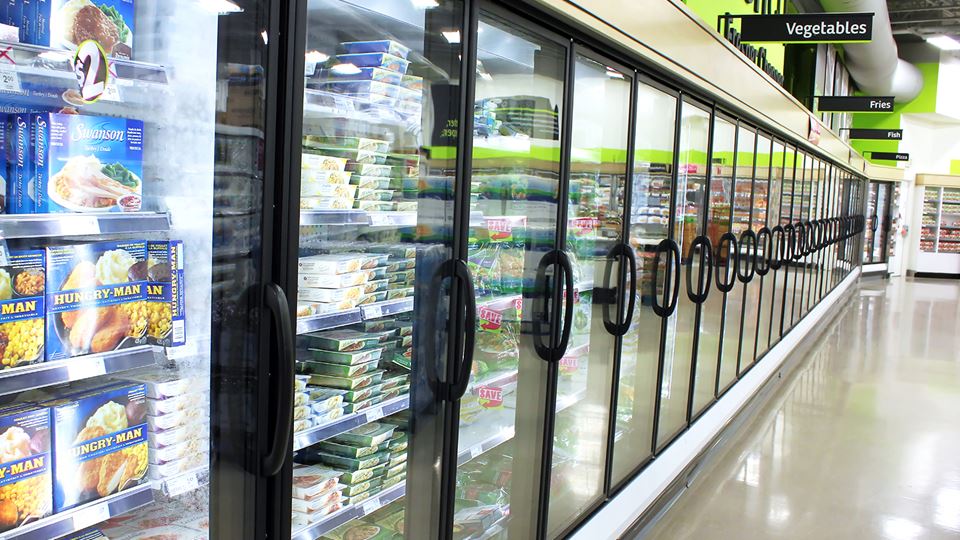
Mastering Refrigeration: Expert Techniques for Success
Table of Contents
Refrigeration is an essential part of modern life. It allows us to preserve food and keep it fresh for longer periods of time, making our lives easier and more convenient. But how much do you really know about refrigeration? In this blog post, we will take a closer look at the basics of refrigeration, the different types of refrigerators available, and how it works. We’ll also provide expert tips on optimizing refrigerator use, ways to save energy in the refrigerator, and ways to keep food fresh. Lastly, we will help you master your freezer with effective tips for using it properly. Whether you’re a homeowner looking to improve your kitchen skills or a professional chef seeking to optimize your commercial kitchen’s performance, this blog post has everything you need to know about mastering refrigeration techniques for success.

What is refrigeration?
Refrigeration is a process where heat is transferred from one area to another using a compressor and refrigerant. Ancient civilizations like the Greeks and Romans used evaporative cooling techniques, and mechanical refrigeration systems were developed in the 19th century. Today, refrigeration equipment is widely used for both commercial and household purposes, with the primary means being the refrigeration cycle.
Types of refrigerators
When it comes to refrigerators, there are a variety of types available to choose from. These include top-freezer, bottom-freezer, side-by-side, French door, and compact models. Each configuration has its own advantages and may be suitable for different needs and spaces.
Modern refrigerators have also evolved to incorporate advanced features such as ice makers, water dispensers, and temperature control options. Some models even offer energy-saving features and smart technology capabilities. This means that you can not only keep your food fresh but also reduce energy consumption.
When selecting a refrigerator, it’s important to consider factors such as size, capacity, and energy efficiency. You want to ensure that the refrigerator fits well in your space and has sufficient storage capacity for your needs. Energy efficiency is also crucial for reducing electricity bills and minimizing your environmental impact.
By understanding the different types of refrigerators available and considering your specific requirements, you can make an informed choice that meets all your needs. Whether you’re looking for a compact model for a small living space or a spacious French door refrigerator for a large family, there is a wide range of options to suit every preference.
How refrigeration works
Refrigeration operates based on the principles of thermodynamics and the refrigeration cycle, which consists of four main processes: compression, condensation, expansion, and evaporation. The cycle begins with a refrigerant, such as Freon or ammonia, being compressed and then cooled in the condenser. During this process, heat is released to the surroundings. The cooled refrigerant then undergoes expansion in the evaporator, where it absorbs heat from the surroundings, causing the temperature to decrease. This cycle of compression, condensation, expansion, and evaporation allows for the transfer of heat and the creation of low temperatures.
In the early 1920s, refrigeration became more prevalent thanks to the advancements made by an American physician and inventor. These innovations brought refrigeration out of the realm of large-scale commercial refrigeration, such as cold storage warehouses, and into smaller, practical applications. The first practical purpose-built refrigeration machine was developed by a Scottish professor named William Cullen at the University of Glasgow. His machine consisted of a pump that created a partial vacuum in an enclosed space, resulting in low temperatures.
The discovery of the Peltier effect in the 19th century further contributed to the development of refrigeration technology. This effect describes the rapid expansion of gases when an electric current passes through a junction between two different conductive materials. It was through experiments with the Peltier effect that the first small refrigerating machines were created.
Refrigeration technology has come a long way since its origins, and today it plays a vital role in various industries and household refrigerators. By harnessing the principles of thermodynamics and implementing innovative designs and technologies, refrigeration allows for the preservation and storage of food sources and other perishable goods at low temperatures.
Tips for optimizing refrigerator use
To ensure food safety and prevent spoilage, it is crucial to keep the refrigerator temperature set at or below 40°F (4°C). This low temperature helps maintain the freshness of perishable items. Another important tip for optimizing refrigerator use is to regularly clean and organize the refrigerator. By doing so, you can ensure proper airflow within the unit and prevent any unpleasant odors.
In addition, it is advisable to avoid overloading the refrigerator. When the fridge is packed too tightly, it hinders airflow, making it harder for the unit to cool properly and decreasing energy efficiency. To monitor and maintain the temperature accurately, consider using a refrigerator thermometer. This allows you to adjust the temperature as needed and ensure that food items are stored at the ideal temperature.
Another tip for optimizing refrigerator use is to check the refrigerator door seals regularly. Make sure they are tight and free from any damage to maintain proper insulation. This helps to prevent cold air from escaping and warm air from entering the refrigerator, ensuring optimal cooling efficiency.
By following these tips, you can optimize the use of your refrigerator and ensure that your food stays fresh and safe for consumption.
Ways to save energy in the refrigerator
To save energy in your refrigerator, start by setting the temperature to the highest safe level. This helps to reduce energy consumption while still keeping your food fresh. Another way to save energy is to allow hot food to cool down before placing it in the refrigerator. By doing so, you can avoid unnecessary heat transfer and make your refrigerator more efficient.
Keeping your refrigerator well-stocked can also help save energy. The contents of the refrigerator act as insulation, which helps maintain lower temperatures. This means that your refrigerator doesn’t have to work as hard to cool down and stay at the desired temperature. Additionally, regularly defrosting the freezer is important to remove ice buildup. Ice buildup decreases energy efficiency, so keeping your freezer free from ice will help your refrigerator use less energy.
Finally, check and replace the door seals of your refrigerator if they are worn out or not functioning properly. Damaged door seals can cause air leaks and energy loss, forcing your refrigerator to work harder to maintain the desired temperature. By ensuring that the door seals are tight, you can improve energy efficiency and reduce energy consumption.
By following these simple tips, you can save energy and reduce your environmental footprint while still keeping your food fresh and safe.
Ways to keep food fresh in the refrigerator
To ensure that your food stays fresh in the refrigerator, there are several key steps you can follow. First, store perishable foods, such as meats and dairy products, in the coldest part of the refrigerator. This is typically the back or bottom shelves, where temperatures are consistently lower. By keeping these items in a colder environment, you can help maintain their freshness for longer periods.
Another important tip is to use airtight containers or wraps to seal leftovers. This not only helps to prevent odor transfer but also keeps your food protected from potential contaminants. By sealing your leftovers tightly, you can extend their shelf life and maintain their quality.
Rotating your food items regularly is another effective way to keep them fresh in the refrigerator. By using older items first, you can avoid spoilage and waste. This ensures that no food gets forgotten and left to spoil.
Additionally, it’s essential to keep fruits and vegetables in separate drawers with adjustable humidity settings. This helps to maintain their freshness by creating the ideal environment for each type of produce. The adjustable humidity ensures that moisture levels are appropriately regulated for optimal longevity.
Finally, it’s crucial to avoid storing raw meats and cooked foods together in the refrigerator. This prevents cross-contamination and reduces the risk of foodborne illnesses. By following these simple tips, you can maximize the freshness and quality of your refrigerated foods.
Tips for using the freezer effectively
To ensure optimal freezing conditions, it is recommended to set the freezer temperature at or below 0°F (-18°C). This low temperature helps preserve the quality of the food stored in the freezer. Proper packaging and labeling are essential to prevent freezer burn and maintain the freshness of the items. Using freezer-safe containers or bags is highly recommended for storing food for extended periods.
Organizing the freezer with labeled compartments or bins can make it easier to locate specific items when needed. This also helps in maximizing the available space and keeping the freezer organized. Regularly defrosting the freezer is crucial to maintain its efficiency and prevent ice buildup, which can hinder its performance.
By following these tips and techniques, you can make the most out of your freezer and ensure that the food stored within remains fresh and of high quality. With proper maintenance and organization, your freezer will continue to serve its practical purpose efficiently.
What are some tips for keeping my refrigerator clean and hygienic?
Regular cleaning is essential to maintain a clean and hygienic refrigerator. Clean up spills promptly, use a mixture of water and vinegar or baking soda for interior cleaning, discard expired or spoiled food, and store raw meat separately in airtight containers.
How can I properly organize my refrigerator for optimal efficiency?
Properly organizing your refrigerator can maximize its efficiency. Store cold items in the main compartment and frozen items in the freezer section. Use clear containers to reduce food waste and easily see what’s inside. Group similar items together and consider using shelf organizers for added organization.
What are some tips for extending the lifespan of my refrigerator?
To extend the lifespan of your refrigerator, follow these tips: clean the condenser coils regularly, maintain a consistent temperature between 35-38°F, avoid overloading the fridge and blocking air vents, and check and replace worn or damaged door gaskets for a tight seal.
Mastering refrigeration techniques is essential for ensuring the longevity of your appliances, minimizing energy consumption, and keeping your food fresh. Understanding the basics of refrigeration and the different types of refrigerators available will help you make informed decisions when purchasing or maintaining your appliance. Optimizing refrigerator use and implementing energy-saving practices will not only reduce your environmental impact but also save you money on utility bills. Additionally, following best practices for food storage in the refrigerator and utilizing the freezer effectively will help extend the shelf life of your groceries. By incorporating these expert techniques into your daily routine, you can achieve success in mastering refrigeration.
How can I organize my refrigerator for maximum efficiency?
To maximize the efficiency of your refrigerator, keep frequently used items within easy reach and at eye level. Use designated drawers with proper humidity settings for storing fruits and vegetables. Opt for clear containers to easily identify leftovers and prepped ingredients. Regularly check expiration dates and discard any expired or spoiled items.
Are there any eco-friendly ways to maintain my refrigerator?
Yes, there are eco-friendly ways to maintain your refrigerator. You can improve efficiency and reduce energy consumption by regularly cleaning the coils. Additionally, keeping the temperature at a moderate level and using natural cleaners when cleaning the interior can also help save energy.
What temperature should my refrigerator be set at for optimal efficiency?
The ideal temperature for optimal refrigerator efficiency is between 35-38 degrees Fahrenheit. Setting it too low can waste energy and increase your electricity bill. Use a thermometer to monitor the temperature and keep the refrigerator door closed as much as possible for improved efficiency.





